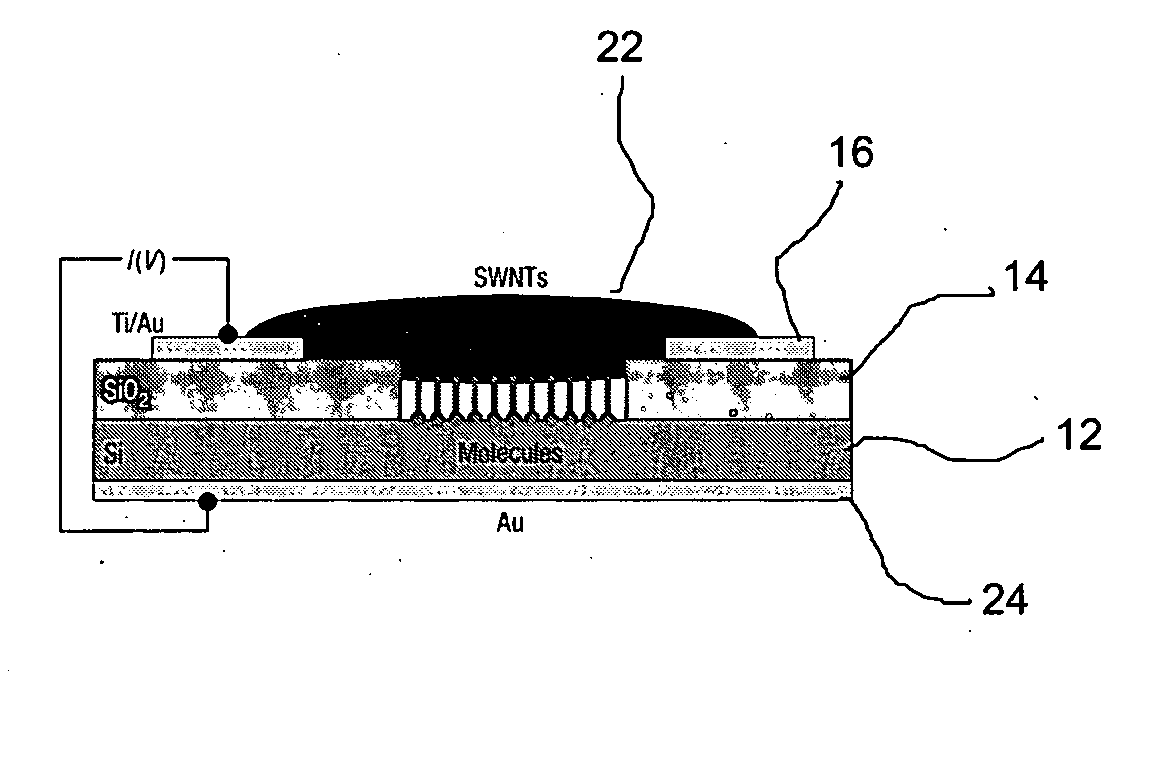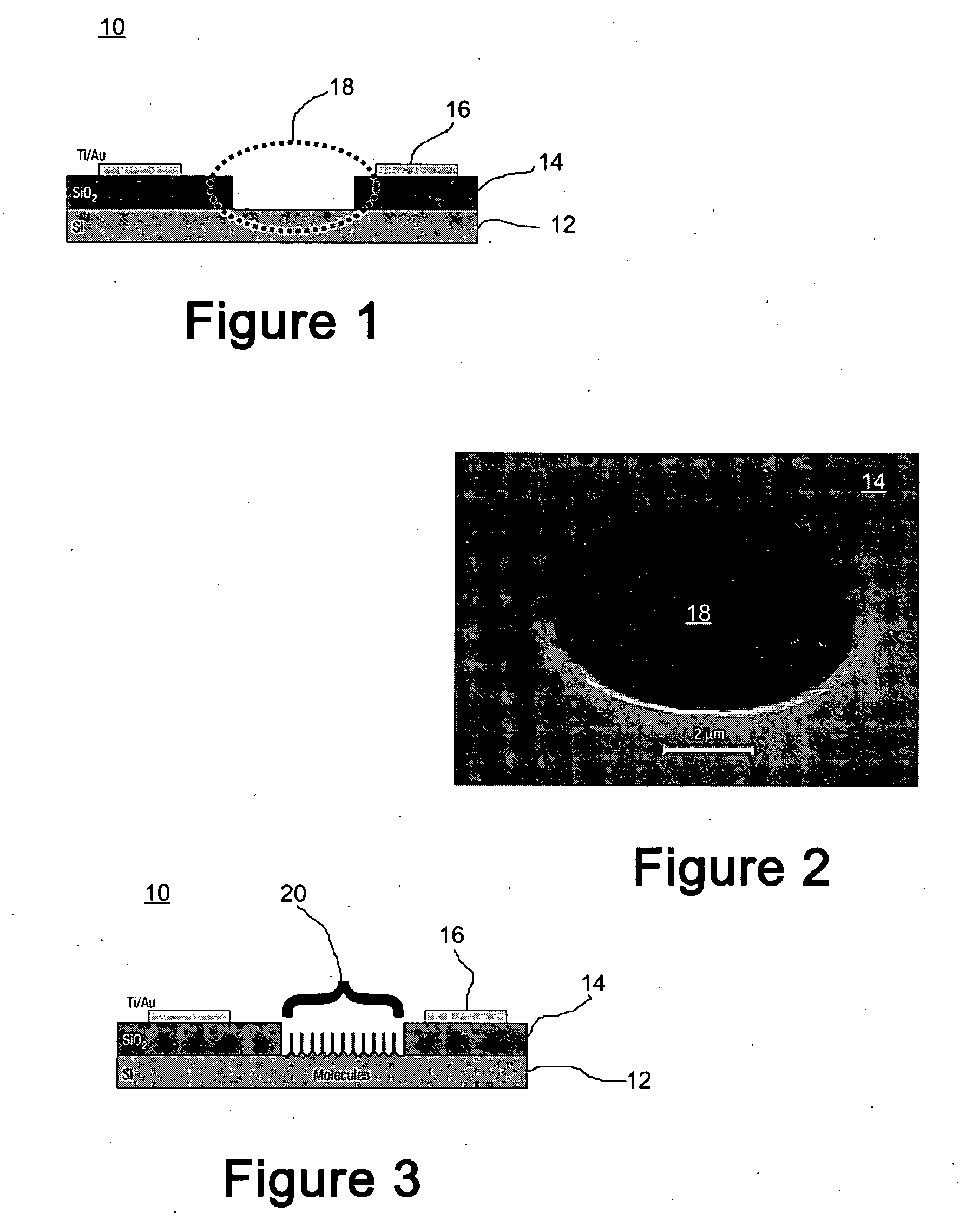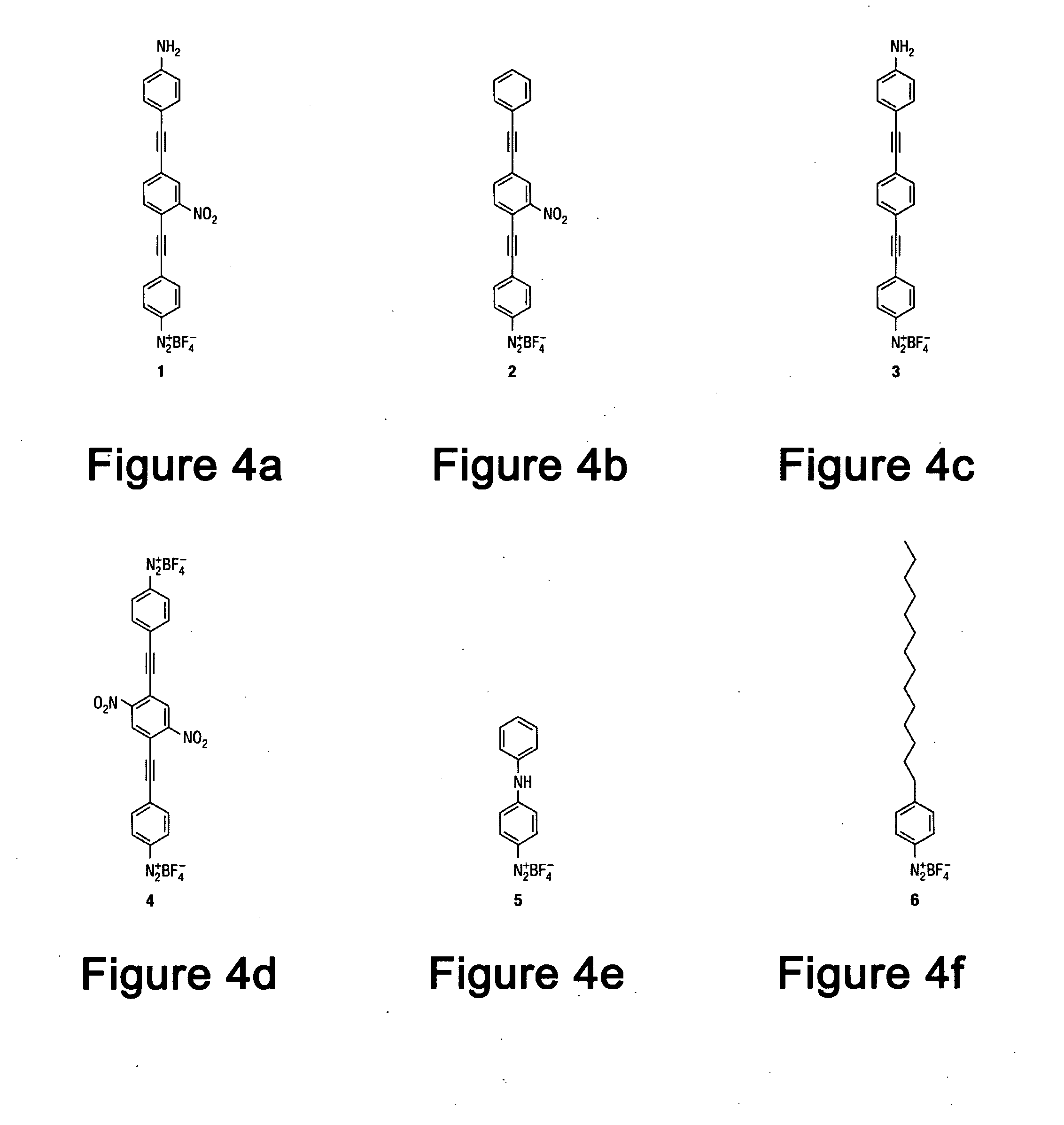Metal-free silicon-molecule-nanotube testbed and memory device
a silicon-molecule, memory device technology, applied in the field ofmolecular electronics, can solve the problems of persistent problems in ultrathin sandwich structure, affecting the conduction through molecular junction, and devices that are not molecular-monolayer-based, and achieve the effect of no hysteresis
- Summary
- Abstract
- Description
- Claims
- Application Information
AI Technical Summary
Benefits of technology
Problems solved by technology
Method used
Image
Examples
Embodiment Construction
[0025] In the following description, specific parametric details are set forth, including specific quantities, sizes, materials, properties, and the like, so as to provide a thorough understanding of the present invention. However, it will be readily apparent to those of ordinary skill in the art that the present invention may be practiced while deviating to varying extents from specifically detailed parameters. In many cases, details concerning certain features and parameters of the invention have been omitted, inasmuch as such details are not believed to be necessary to obtain a complete understanding of the present invention and are within the skills of persons of ordinary skill in the relevant art.
[0026] Referring to FIG. 1, there is shown the starting lithographically defined structure of a silicon-molecule-SWNT device 10 in accordance with one embodiment of the invention. As shown in FIG. 1, structure 10 comprises a silicon substrate 12 upon which is formed an oxide layer 14 ...
PUM
 Login to View More
Login to View More Abstract
Description
Claims
Application Information
 Login to View More
Login to View More - R&D
- Intellectual Property
- Life Sciences
- Materials
- Tech Scout
- Unparalleled Data Quality
- Higher Quality Content
- 60% Fewer Hallucinations
Browse by: Latest US Patents, China's latest patents, Technical Efficacy Thesaurus, Application Domain, Technology Topic, Popular Technical Reports.
© 2025 PatSnap. All rights reserved.Legal|Privacy policy|Modern Slavery Act Transparency Statement|Sitemap|About US| Contact US: help@patsnap.com



